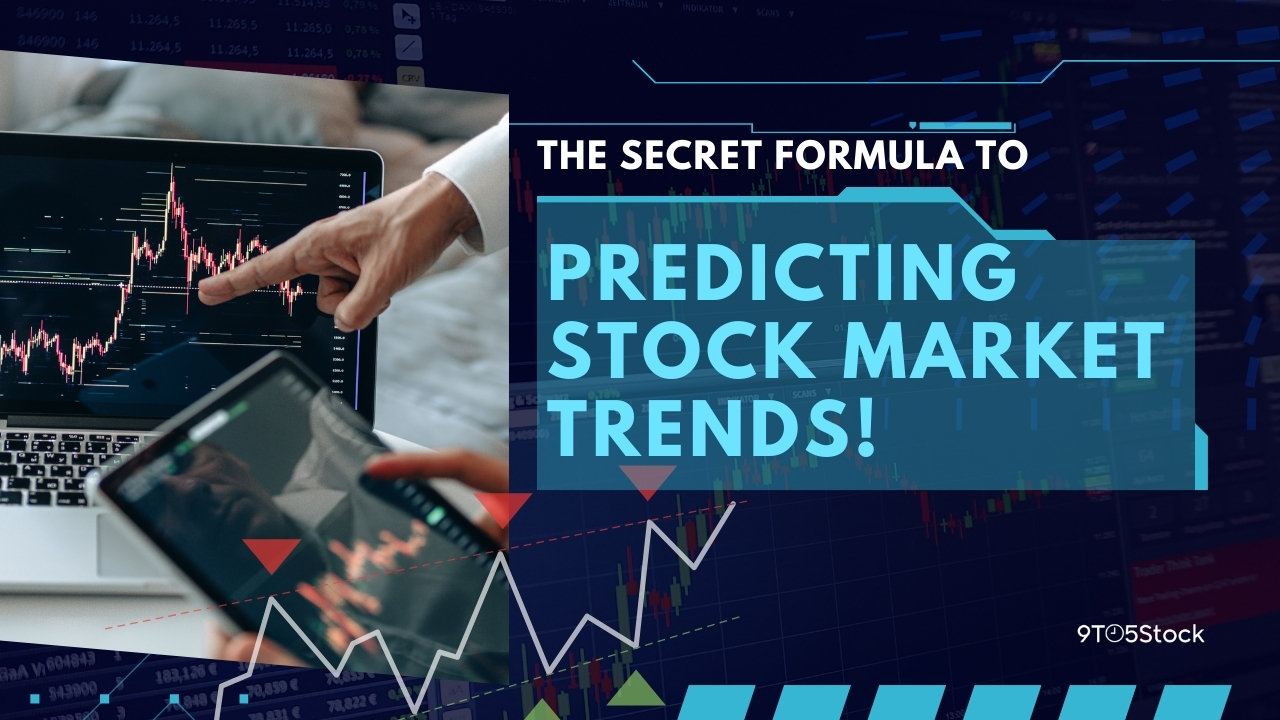The stock market is a vast and intricate system where predicting trends can feel like deciphering a complex puzzle. For investors, understanding how to anticipate market movements is crucial for making informed decisions. This article delves into the methods, tools, and strategies used by experts to forecast stock market trends, providing you with a comprehensive guide to mastering this skill.
Understanding Stock Market Trends

Stock market trends reflect the general direction in which the market is moving. These trends can be upward, downward, or sideways and are crucial for making investment decisions. To predict these trends, investors rely on a combination of historical data, technical indicators, and market analysis. Recognizing patterns in stock price movements and understanding the underlying factors driving these movements are essential for accurate predictions.
The Role of Technical Analysis
Technical analysis involves examining historical price and volume data to forecast future price movements. This method uses charts and technical indicators to identify trends and patterns. Key tools in technical analysis include moving averages, Relative Strength Index (RSI), and Bollinger Bands. By analyzing these indicators, investors can gain insights into potential future market behavior.
Must Read: How to Use Technical Analysis for Better Trading Decisions?
Fundamental Analysis Explained
Fundamental analysis focuses on evaluating a company’s financial health and economic environment to predict its stock performance. This involves examining financial statements, earnings reports, and economic indicators. Key factors include revenue growth, profit margins, and market share. By assessing these elements, investors can estimate a stock’s intrinsic value and make informed predictions.
Using Historical Data for Predictions
Historical data provides valuable insights into market trends and behavior. By analyzing past price movements and market conditions, investors can identify recurring patterns and trends. This data helps in constructing models and forecasts that guide investment decisions. Historical data can be used to test and validate predictive models, ensuring their reliability.
Also Read: Why Most Stock Market Investors Fail – And How to Avoid It!
The Impact of Economic Indicators
Economic indicators such as GDP growth, inflation rates, and unemployment levels play a significant role in market predictions. These indicators provide insights into the overall health of the economy and its potential impact on stock prices. Understanding how these indicators affect market trends helps investors make better predictions and adjust their strategies accordingly.
Sentiment Analysis and Market Trends

Sentiment analysis involves gauging investor sentiment and its impact on market trends. This can be done through surveys, social media analysis, and news sentiment. Positive or negative sentiments can drive market movements and influence investor behavior. By monitoring sentiment, investors can anticipate market reactions and adjust their strategies.
Machine Learning and AI in Market Predictions
Machine learning and artificial intelligence (AI) are transforming the way stock market trends are predicted. These technologies analyze vast amounts of data and identify complex patterns that may be missed by traditional methods. Machine learning algorithms can forecast market trends with high accuracy by learning from historical data and adapting to new information.
Behavioral Economics and Market Psychology
Behavioral economics explores how psychological factors influence market behavior. Concepts such as herd behavior, overconfidence, and loss aversion can impact stock prices and market trends. Understanding these psychological factors helps investors anticipate market movements and develop strategies to mitigate emotional biases.
Key Market Indicators to Watch
Monitoring key market indicators is essential for predicting trends. Important indicators include the S&P 500 Index, Dow Jones Industrial Average, and NASDAQ Composite. Additionally, tracking interest rates, consumer confidence indices, and corporate earnings reports can provide valuable insights into market direction.
Developing a Personal Trading Strategy
Creating a personal trading strategy involves setting clear goals, defining risk tolerance, and selecting appropriate methods for trend prediction. Investors should consider their investment horizon, preferred trading style, and the tools they will use for analysis. A well-defined strategy helps in making consistent and informed trading decisions.
Also Read: How to Trade Stocks with Confidence: Expert Advice!
Case Studies of Successful Predictions
Examining case studies of successful market predictions provides practical insights into effective forecasting methods. These case studies often highlight the use of specific techniques, tools, and strategies that led to accurate predictions. Learning from these examples can enhance your understanding and application of trend prediction methods.
Common Pitfalls in Trend Prediction
Predicting stock market trends is challenging, and several common pitfalls can lead to inaccurate forecasts. These include over-reliance on a single method, ignoring market conditions, and failure to adapt to changing trends. Being aware of these pitfalls helps investors refine their prediction techniques and improve accuracy.
Tools and Resources for Trend Analysis
A variety of tools and resources are available for trend analysis, including charting software, financial news platforms, and analytical tools. Popular tools include TradingView, MetaTrader, and Bloomberg Terminal. Utilizing these resources effectively enhances your ability to analyze trends and make informed investment decisions.
The Future of Trend Prediction Techniques
The field of trend prediction is continuously evolving with advancements in technology and data analysis. Future trends may include more sophisticated AI models, enhanced data analytics, and improved predictive algorithms. Staying updated with these advancements helps investors leverage new techniques for more accurate predictions.
Also Read: How to Protect Your Stock Market Investments During a Recession!
Building a Robust Predictive Model
Developing a robust predictive model involves combining various techniques and data sources to enhance accuracy. This includes integrating technical and fundamental analysis, utilizing machine learning algorithms, and incorporating real-time data. A well-constructed model provides reliable forecasts and supports informed decision-making.
Combining Different Prediction Methods
Integrating multiple prediction methods can improve forecasting accuracy. For example, combining technical analysis with fundamental analysis and sentiment analysis provides a comprehensive view of market trends. This multi-faceted approach helps in cross-verifying predictions and reducing the likelihood of errors.
Risk Management in Trend Prediction
Effective risk management is crucial in trend prediction to minimize potential losses. This includes setting stop-loss orders, diversifying investments, and regularly reviewing and adjusting strategies. Implementing risk management techniques helps protect investments and manage uncertainties.
The Role of Market News in Trend Analysis
Market news plays a significant role in shaping market trends and influencing investor behavior. Keeping up with financial news, economic reports, and geopolitical events helps in understanding market dynamics and adjusting predictions accordingly. Timely news analysis enhances the accuracy of trend predictions.
Ethical Considerations in Trend Prediction
Ethical considerations in trend prediction involve ensuring transparency, avoiding manipulative practices, and adhering to regulatory guidelines. Ethical practices build trust with investors and contribute to a fair and transparent market environment. Maintaining high ethical standards is essential for long-term success in trend prediction.
Also Read: Top 5 Healthcare Stocks to Watch in 2024!
Conclusion and Key Takeaways
Accurately predicting stock market trends requires a combination of various methods, tools, and insights. By understanding and applying technical and fundamental analysis, utilizing historical data, and leveraging advanced technologies, investors can enhance their forecasting abilities. Continuously refining your strategies and staying informed about market developments are keys to successful trend prediction.
FAQ
What is the most effective method for predicting stock market trends?
There is no single method that is universally effective. Combining technical analysis, fundamental analysis, and sentiment analysis often provides the most accurate predictions.
How does machine learning improve trend prediction?
Machine learning algorithms can analyze large datasets and identify complex patterns that traditional methods may miss, leading to more accurate forecasts.
What role do economic indicators play in trend prediction?
Economic indicators provide insights into the overall health of the economy, which can impact stock prices and help in forecasting market trends.
How can behavioral economics impact market predictions?
Behavioral economics explores how psychological factors and investor behavior influence market trends, providing insights into market movements that are not always evident from data alone.
What tools are best for trend analysis?
Popular tools for trend analysis include TradingView, MetaTrader, and Bloomberg Terminal. These tools offer advanced charting and analytical capabilities.
Hello guys! My name is David Wilson, and I'm a passionate stock market enthusiast and the founder of 9to5Stock. With a deep understanding of market dynamics and a commitment to empowering others, I share valuable insights, strategies, and updates to help investors like you make informed decisions and achieve financial success. Welcome to our community, and let's thrive together in the world of investing!
